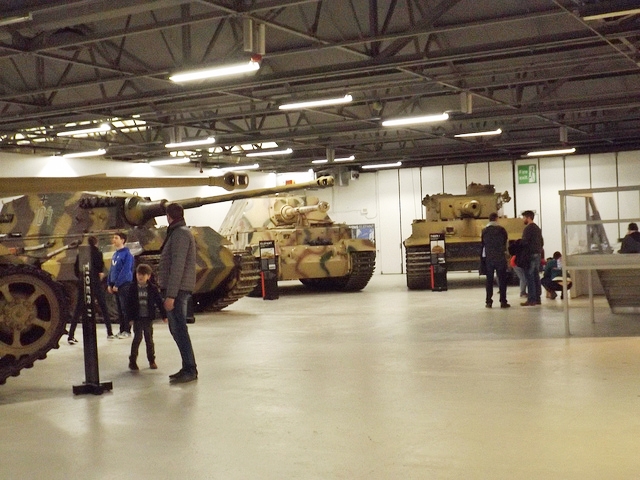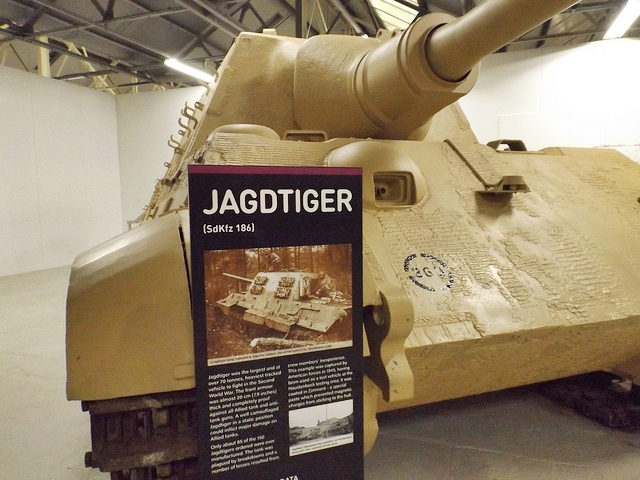
The Second World War resulted in the deaths of around 85 million people. Additionally, tens of millions more people were displaced. However, amid all the carnage people demonstrated remarkable courage, fortitude, compassion, mercy and sacrifice. We would like to honour and celebrate all of those people. In the War Years Blog, we examine the extraordinary experiences of individual service personnel. We also review military history books, events, and museums. And we look at the history of unique World War Two artefacts, medals, and anything else of interest.
Face to Face with the German Tiger tank
In this article, we look at the merits and deficiencies of the German Tiger tank during World War Two, and the muddled strategic thinking that drove the project forward.
The Tiger tank (Panzerkampfwagen VI Tiger Ausf. E) entered service at the end of 1942. It was not a great start. The tank was deployed over unsuitable terrain, limiting its effectiveness. The early production Tigers were plagued with technical problems including dangerous engine fires. Many of these early teething problems were symptoms of the tank being rushed into service without adequate development and testing. However, the Tiger was also over-engineered. The result was a highly complex, often temperamental weapons system that required extensive preventative maintenance and careful handling.
Fighting the Wrong War
Manufactured by Henschel, the Tiger I Ausf. E was the product of creaky strategic thinking. The Tiger was not built in response to Soviet tanks like the T-34 and KV-1. Instead, the Tiger was designed as a “sledgehammer” to smash holes in the enemy’s lines, which support units could then exploit. However, the Germans were already fighting a largely defensive war by late 1942. The days of the blitzkrieg were over. A far better solution would have been to concentrate all manufacturing resources on producing the reliable, very effective Panzer IV main battle tank (MBT).
60 Tonne Sledgehammer
Although the Tiger had many deficiencies, it was not without merit. In the hands of a well-trained and experienced crew who understood the Tiger’s advantages, the tank could prove a formidable opponent. Tank design is about achieving the right balance of mobility, armour and firepower so the vehicle can perform its primary task. Clearly, the Tiger was designed as a sledgehammer, and that’s what the panzer forces got. The Tiger weighed in at just under 60 tonnes, with 100mm frontal armour, 80mm side and rear armour, two MG-34 machine guns, and a high velocity, flat trajectory 88mm main gun.
40 Percent Reliable
The Tiger’s 88mm main gun fired both armour piercing (AP) and high explosive (HE) shells. Officially, the tank could store 92 rounds. However, crews typically packed as many additional shells into every available space as possible. Although the tank was underpowered by the Maybach HL230 700-horsepower petrol engine, it was surprisingly quick and agile on good ground. A semi-automatic gearbox and steering wheel also made the tank easy to drive. Nevertheless, even when the tank was well maintained and supported by a good workshop company, the Tiger’s overall reliability was abysmal. Most Tiger Is were only operational 40 per cent of the time. The reliability of other Tiger variants such as Tiger II Ausf. B, Panzerjager and Jagdtiger were even worse.
Recovery No Easy Task
Naturally, broken down and battle-damaged tanks need to be recovered, whenever possible. Unfortunately, the Tiger’s size and weight often worked against easy recovery. Typically, it took two or three prime movers (tractors) to tow a Tiger to safety. Panzer units were under strict orders not to use one Tiger to tow another, as this could result in damaging the second tank. However, necessity often trumped orders and Tigers frequently towed one another. Later, specialist recovery tanks were introduced, such as the Bergepanther, but these vehicles were always in short supply.
The Importance of Training
How well or poorly an individual tank performs is mainly reliant on the quality and training of the crew. As the war progressed and losses mounted, the German army struggled to provide adequate manpower or training to its panzer forces. Subsequently, overall performance suffered. However, the Germans valued the lives of their panzer crews, and the Tiger provided a separate escape hatch for each man. Many Allied tanks were not designed as well, resulting in men being trapped inside burning vehicles after they had been hit. When it came to training Tiger crews, the official manual was surprisingly innovative. The Tigerfibel aimed to convey complex battlefield instructions in a simple and memorable manner to young recruits using cartoons, jokes and risqué pictures of women. Even today, you can buy a copy in English translation on Amazon.
The Unsinkable Tiger
Thanks to a combination of thick, seemingly impervious frontal armour, the legendary 88mm gun and copious amounts of Nazi propaganda, the Tiger quickly gained a reputation for impregnability. Of course, the Tiger was as impregnable as the Titanic was unsinkable. In reality, the Tiger’s main value came from its ability to stand off and deal with its opponents at a distance. However, even with mid and late-production improvements, by 1944 the Tiger was fighting a losing battle.
The Victory of Mass Production
The Germans went for quality over quantity in tank production, but a lack of time and resources meant they never really delivered on quality. They also chose to pursue an obsolete military strategy at odds with the realities of their situation. In contrast, the Allies went for simple, reliable vehicles they could mass-produce in vast quantities. Over 110,000 Soviet T-34 and American M4 Sherman medium tanks were manufactured compared with just over 1,300 Tiger I Ausf. E. That’s 85 to one, and only half the Tigers would be fit for service at any time. What’s more, the Allies didn’t stand still. They improved their existing tank forces and introduced new, heavier tanks. The British Comet, for example, entered service in December 1944. Ultimately, the Tiger only ever won the propaganda war. In all other respects, the Tiger was a costly, unreliable failure.






